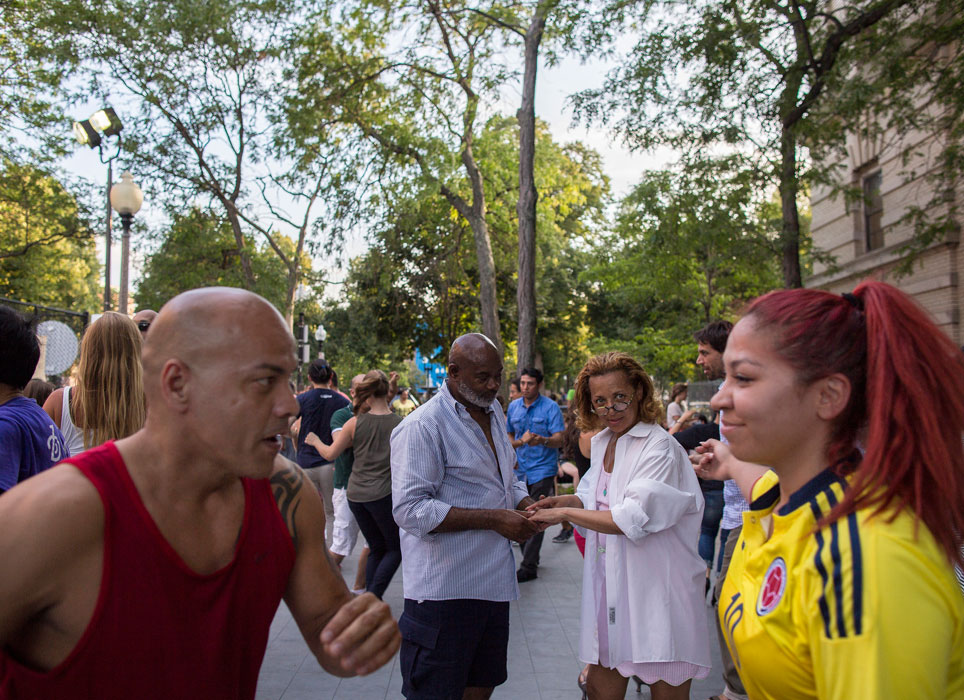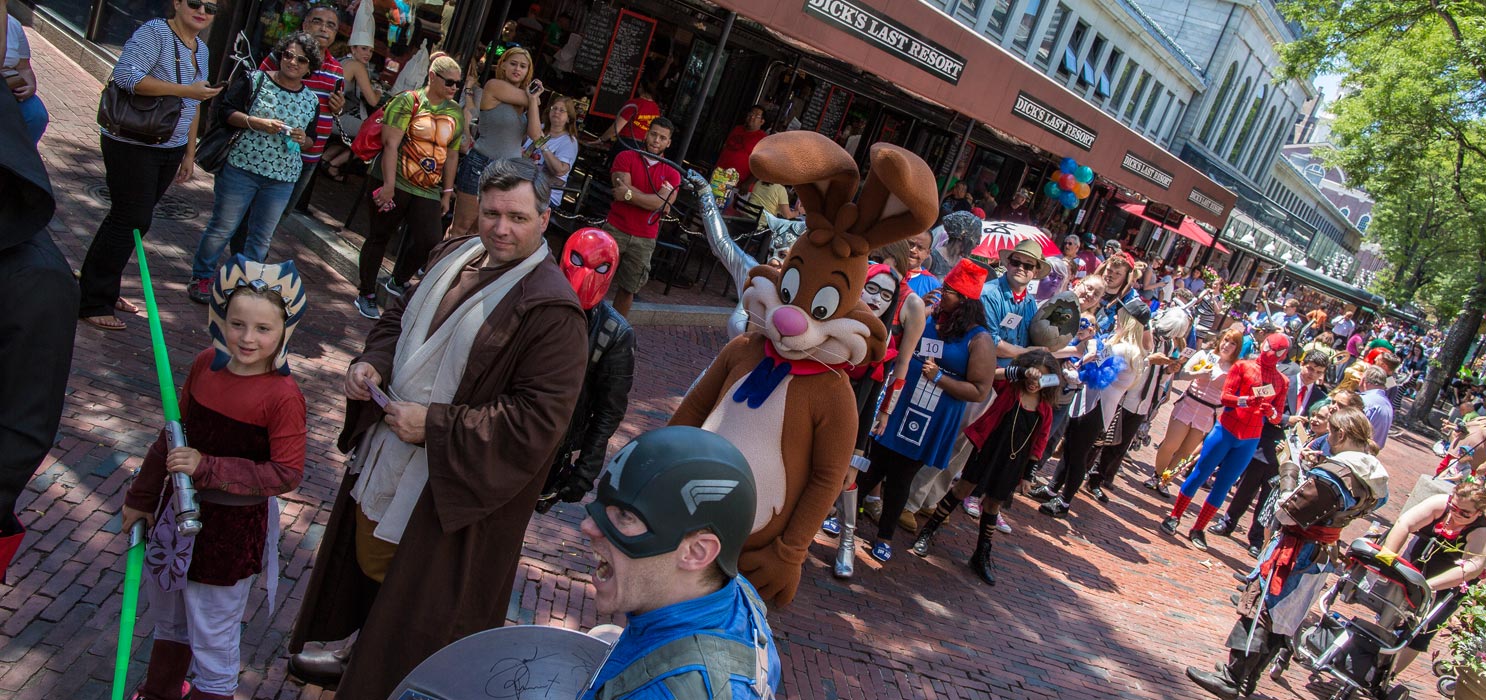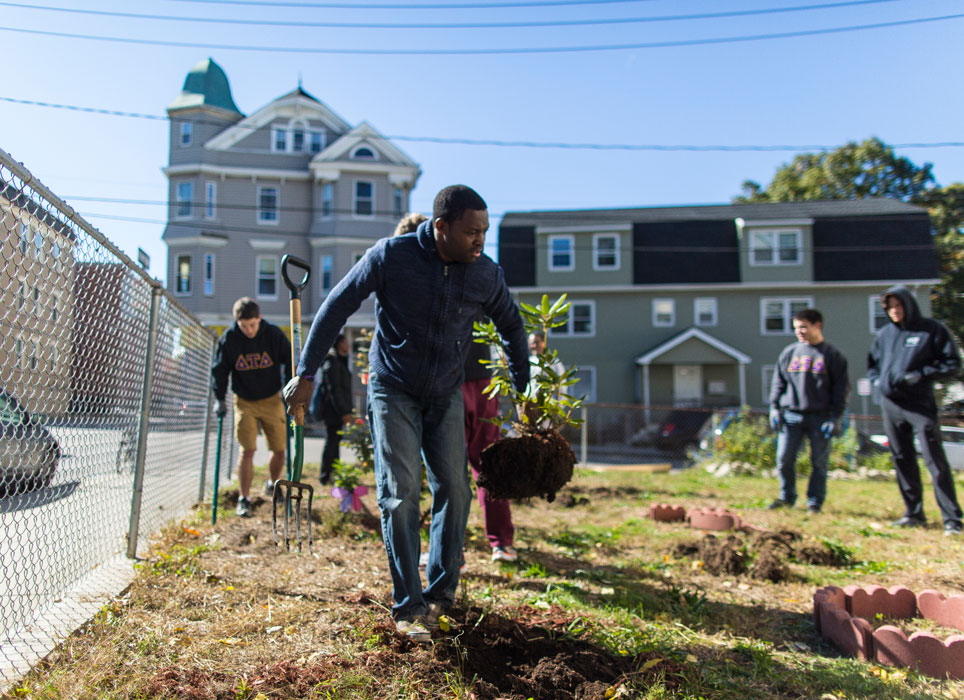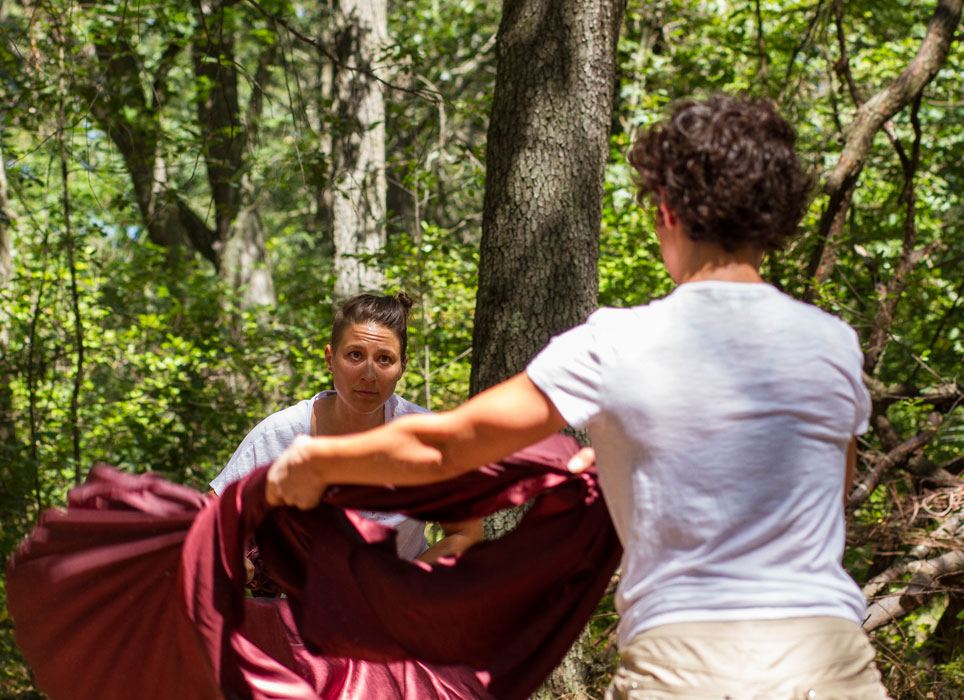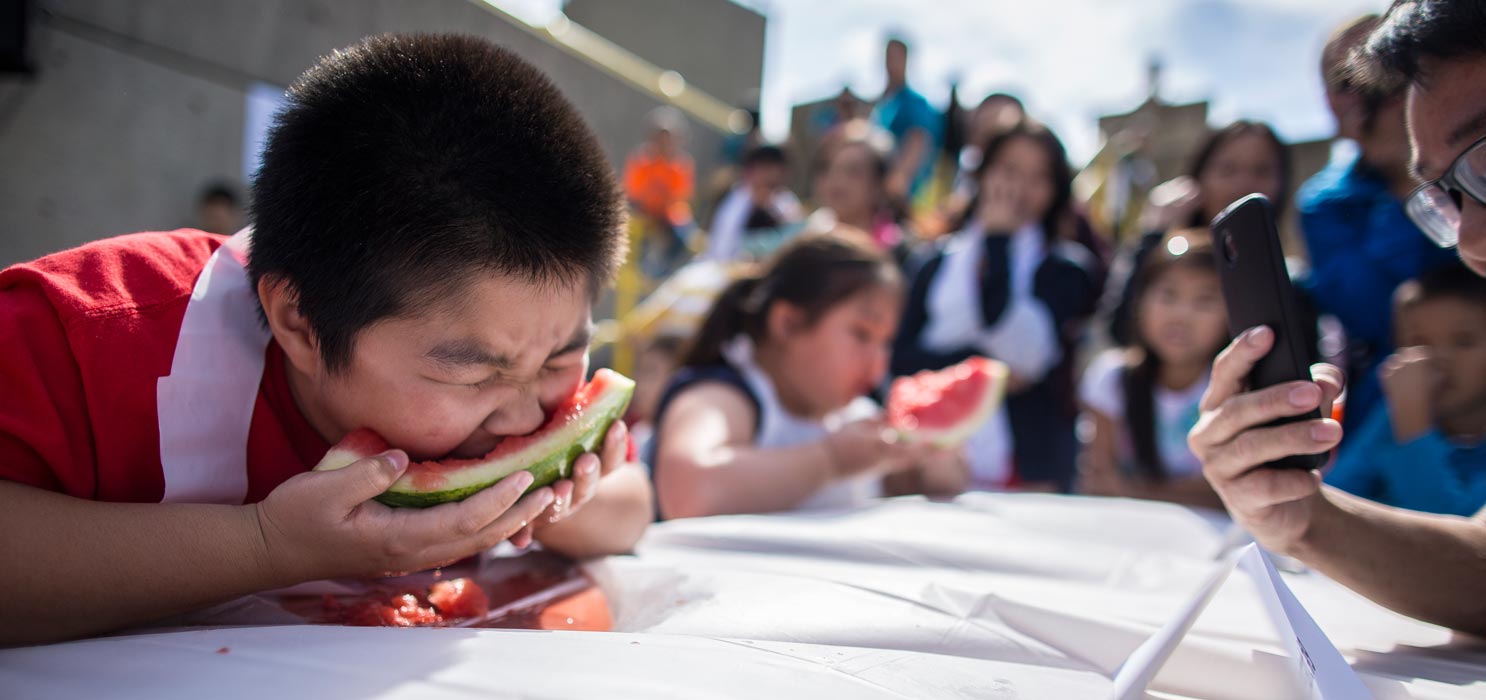Boston Creates: Five goals, 10 years
The Boston Creates community engagement process produced a huge trove of observations, insights, and ideas for strengthening the city’s arts and culture sector, making it more equitable and inclusive, and giving it a truly central role in the life of Boston.
Beginning in October 2015, the City spent three months digesting this input and identifying and understanding the highest-priority issues and themes.
Working groups made up of members of the Boston Creates Steering Committee, Leadership Council, special affinity groups, and Greater Boston Arts Funders Group, along with staff members from the Mayor’s Office and the Mayor’s Office of Arts & Culture, met frequently in the early months of 2016 to create a draft framework for the cultural plan. They used the input from the community engagement process, new and existing research on arts and culture in Boston, and their own experiences with Boston’s arts and culture sector to make recommendations. These fall into three categories: goals, strategies, and tactics.
Goals overview
The following goals represent the five core areas of focus for Boston’s cultural plan. Taken together, these goals serve as an organizing set of actions that the City and its partners must undertake to achieve Bostonians’ vision for arts and culture. The numbering of the goals does not indicate order of priority.
- Create fertile ground for a vibrant and sustainable arts and culture ecosystem.
- Keep artists in Boston and attract new ones here, recognizing and supporting artists’ essential contribution to creating and maintaining a thriving, healthy, and innovative city.
- Cultivate a city where all cultural traditions and expressions are respected, promoted, and equitably resourced, and where opportunities to engage with arts and culture are accessible to all.
- Integrate arts and culture into all aspects of civic life, inspiring all Bostonians to value, practice, and reap the benefits of creativity in their individual lives and in their communities.
- Mobilize likely and unlikely partners, collaborating across institutions and sectors, to generate excitement about, and demand and resources for, Boston’s arts and culture sector.
Definitions
Goals: What the city needs to do, in the broadest terms, to realize its vision for arts and culture in Boston over a 10-year time frame.
Strategies: Proposed ways of meeting the plan’s goals, responding to the highest-priority needs identified in the Boston Creates community engagement process.
Tactics: Specific programs, advocacy, research, or other proposed actions to support the strategies, based on the present environment, existing partners, and current knowledge of the sector.
A timeframe for implementing each tactic is indicated: short-term (0–12 months); mid-term (1–3 years); and long-term (4–10 years). Strategies and tactics may change over the course of the plan’s implementation in response to changes in the environment.
City and community roles
The City launched Boston Creates in response to Bostonians’ clear desire for City government to play a much more active role in supporting and promoting arts and culture than it has in the past—a role that the City is already embracing. Yet, while calling for City leadership, participants in the community engagement effort also acknowledged that the City could not go it alone. In reviewing tactics for supporting the goals and strategies in the cultural plan, the working groups came to realize that the City will play different roles in the implementation of the various tactics, depending on the particular tasks involved:
- Some proposed tactics will be City-owned, with City government both leading and implementing the required actions.
- The implementation of other tactics will be City-led, with City government sharing ownership and implementation with partners in arts and culture and/or other sectors.
- Still, other tactics will be implemented in a City-catalyzed process in which City government endorses ideas and convenes stakeholders, but for which it may be more appropriate for other partners to own and lead implementation because of their mission, strategic priorities, or current programming.
Plan Recommendations
GOAL 1: Create fertile ground for a vibrant and sustainable arts and culture ecosystem.
Creating “fertile ground” for arts and culture in Boston involves strengthening infrastructure such as facilities, organizations, programs, funding, and the networks and relationships that make everything else in the arts and culture sector work. Goal 1 responds to, among other things, concerns expressed in the community engagement process about Boston’s small and mid-sized organizations. Yet this is not meant to diminish in any way the importance of the city’s larger arts and culture institutions. These large organizations remain crucial to the ecosystem—creating thousands of jobs for artists, administrators, and staff; driving arts-related philanthropy and tourism; and providing large-scale opportunities for participation in the arts. Strategies and tactics for implementing this goal respond to their needs as well.
Building networks and partnerships is another crucial component of creating fertile ground for Boston’s arts and culture ecosystem. Boston Creates itself represents one of the most significant steps for the City in its vital role as a network-builder for arts and culture.
Strategy 1: Create partnerships to develop platforms, funding streams, and networks that enable risk-taking and innovation across the arts and cultural sector.Tactic 1.1.1 City-led Short-term; Bring together members of the arts and culture community to catalyze discussion about artistic risk-taking across Boston and provide guidance for the creation of a new grant program in support of artistic risk.
Tactic 1.1.2 City-catalyzed Mid-term; Convene funding partners and advocate for a fund for artistic risk-taking to support arts and culture organizations in the creation of new work.
Strategy 2: Support the availability, affordability, and sustainability of cultural spaces and facilities for arts and culture organizations of all sizes in Boston.Tactic 1.2.1 City-owned Short-term to Long-term; Complete a study of Boston performing arts venues to understand the current and anticipated venue challenges of local performing arts and culture organizations, followed by an implementation phase for recommendations; provide for periodic assessment of needs based on study findings.
Tactic 1.2.2 City-led Short-term; Identify how land use tools and other policies, including financing strategies, can provide incentives and requirements for the creation of new cultural spaces in connection with real estate development or sustained support for existing cultural spaces.
Tactic 1.2.3 City-catalyzed Long-term; Convene funding partners to create a reliable and predictable source of pooled funding to mitigate depreciation costs and/or invest in facilities reserves for organizations operating arts and culture spaces and facilities in Boston.
Strategy 3: Strengthen small and mid-sized arts and culture organizations in Boston.Tactic 1.3.1 City-catalyzed Long-term; Develop a citywide funding initiative to provide more general operating support for small and midsized arts and culture organizations.
Tactic 1.3.2 City-led Mid-term; Develop strategic partnerships with arts service organizations, foundations, and universities to implement capacity-building programs for arts and culture organizations in response to the needs of the sector.
Strategy 4: Enact and coordinate municipal policies to better support creative expressions and endeavors citywide.Tactic 1.4.1 City-owned Short-term to Mid-term; Review and streamline municipal policies and procedures affecting arts and cultural uses including permitting, zoning, and licensing.
Tactic 1.4.2 City-owned Short-term to Mid-term; Simplify the Boston Art Commission application process for permanent and temporary public art on City property by creating a more user-friendly application process as well as an insurance waiver for small-scale/low-risk projects.
GOAL 2: Keep artists in Boston and attract new ones here, recognizing and supporting artists’ essential contribution to creating and maintaining a thriving, healthy, and innovative city.
Goal 2 reinforces the importance of artists in Boston. Given that resources for individual artists in the city have been extremely limited, this goal is intended to help artists do their best work by providing essential means of support. While Goal 1 addresses needs for cultural spaces and facilities for arts organizations, this goal addresses the spaces that are most important to individual artists: affordable housing and workspace. The City understands that meeting artists’ space needs requires innovative approaches to housing and facilities, especially in today’s aggressive real estate market.
Strategy 1: Invest in individual artists in Boston.Tactic 2.1.1 City-owned Short-term; Make grants to individual artists living in Boston.
Tactic 2.1.2 City-catalyzed Mid-term; Encourage professional development opportunities for teaching artists or artist educators by partnering with higher education and arts colleges.
Tactic 2.1.3 City-catalyzed Mid-term; Provide continuing education opportunities, including high-quality and affordable business and career development training, for early- to mid-career arts and culture professionals through partnerships with higher education institutions, arts colleges, and arts service organizations.
Tactic 2.1.4 City-owned Mid-term; Encourage developers to incorporate work and presentation space for artists into development efforts.
Strategy 2: Make City government more accessible, welcoming, and responsive to artists.Tactic 2.2.1 City-owned Short-term; Create an Artists Resource Desk within City Hall, centralizing staff support for: permitting, zoning, and other regulatory requirements for arts and culture uses; communicating professional opportunities; navigating other municipal services and departments.
Tactic 2.2.2 City-owned Short-term; Facilitate exhibition, performance, and convening opportunities for artists in City Hall, libraries, and other municipally-owned spaces in neighborhood settings.
Tactic 2.2.3 City-led Mid-term Facilitate guest curation of local artists’ work in City Hall, libraries, and other municipally-owned spaces by partnering with arts and culture organizations, local galleries, and others.
Tactic 2.2.4 City-owned Short-term; Recognize and promote the significant contributions of Boston artists by expanding on currently bestowed honors such as a Poet Laureate designation, an Emerging Artist Award, and City Proclamations recognizing such contributions.
Strategy 3: Identify and pursue opportunities for affordable artist housing and presenting and production spaces.Tactic 2.3.1 City-led Short-term; Increase the supply of affordable live/work spaces for artists by developing strategic partnerships with the Department of Neighborhood Development, Boston Redevelopment Authority, Boston Housing Authority, Boston Society of Architects, and real estate development community.
Tactic 2.3.2 City-owned Long-term; Create an inventory and promote the use of existing City- and privately-owned spaces and buildings that can be made available for individual artists creating and presenting work in Boston.
Tactic 2.3.3 City-owned Mid-term Explore new housing models supporting artists, such as mixed-constituency housing, artist cooperatives, and university partnerships, in collaboration with the Department of Neighborhood Development.
GOAL 3: Cultivate a city where all cultural traditions and expressions are respected, promoted, and equitably resourced, and where opportunities to engage with arts and culture are accessible to all.
Goal 3 responds to a clear consensus in the community engagement process that Boston’s arts and culture sector contains barriers to full inclusion and participation—barriers arising from entrenched, systemic inequities around race, class, geography, and ability. The cross-cultural exchange envisioned in this goal involves more than the promotion and enjoyment of diverse cultures. It is about creating a two-way street for genuine learning so that arts and culture organizations and programs of all kinds can better serve Boston audiences and residents.
Strategy 1: Address cultural disparities across race, class, ability, and geographic lines by intentionally bridging divides and promoting cross-cultural exchange.Tactic 3.1.1 City-catalyzed Short-term to Mid-term; Advocate for the development of a cultural equity study in Boston as a complement to the disparity study that the Mayor’s Office of Economic Development is conducting.
Tactic 3.1.2 City-owned Short-term Explore how to use arts and culture as a vehicle for dialogue within the citywide conversation about historic race and class divisions in Boston, in partnership with the City’s Chief Resilience Officer.
Tactic 3.1.3 City-catalyzed Long-term; Advocate for the establishment of a fund to support creation or presentation of artwork addressing disparities or deepening understanding across divides.
Strategy 2: Advance equity by facilitating creative, cultural, and artistic opportunities in historically underserved communities.Tactic 3.2.1 City-led Short-term; Grow municipal resources for grassroots arts or culture projects by individual artists, community members, and unincorporated groups.
Tactic 3.2.2 City-led Short-term; Create a responsive capacity-building program for community arts and culture organizations, cultural festivals, and projects, in partnership with community leaders; the Mayor’s Office of Tourism, Sports, and Entertainment; the Office for Immigrant Advancement; and the Office of Neighborhood Services.
Tactic 3.2.3 City-owned Short-term; Ensure that City funding opportunities are accessible to individuals with disabilities or for whom English is not a first language, and that diverse voices are included in funding decisions.
Tactic 3.2.4 City-catalyzed Mid-term; Determine strategies for better serving community arts in historically underserved communities by facilitating strategic partnerships among arts service organizations, advocacy partners, and community-based leaders.
Strategy 3: Leverage City departments, resources, and facilities to embed arts and culture opportunities in every neighborhood, opening access to creative engagement and arts participation citywide.Tactic 3.3.1 City-owned Short-term Identify opportunities for embedding arts and culture programs, classes, and activities in municipal spaces by developing strategic partnerships between City agencies and neighborhood facilities or programs.
Tactic 3.3.2 City-led Mid-term Research systemic barriers to participation and engagement in arts and culture activities for persons with disabilities, and identify solutions and opportunities for change, by partnering with the Commission for Persons with Disabilities and VSA Massachusetts.
Strategy 4: Increase cultural competency (i.e., fluency in relating across cultural divides) within the arts and culture sector; facilitate learning opportunities among diverse populations and cultures; and promote diverse and inclusive participation in the sector.Tactic 3.4.1 City-catalyzed Mid-term; Provide learning opportunities for the arts and culture sector on demographic changes in Boston, cultural competency, and development of cultural spaces and events welcoming to individuals of diverse backgrounds, through partnerships with arts service organizations and funders.
Tactic 3.4.2 City-catalyzed Mid-term; Support the efforts of Boston arts and cultural organizations to better serve and engage diverse audiences and visitors through programming and marketing.
Tactic 3.4.3 City-catalyzed Long-term; Clarify career pathways in the sector, and determine avenues for stronger recruitment efforts and development of professional networks across specializations and for diverse candidates, by convening arts and culture organizations and arts service organizations.
Tactic 3.4.4 City-catalyzed Long-term; Increase awareness of the challenges experienced by persons with disabilities seeking to participate in arts and cultural events and activities, and introduce the tenets of universal design, through conversations with arts and culture organizations.
GOAL 4: Integrate arts and culture into all aspects of civic life, inspiring all Bostonians to value, engage in, and reap the benefits of creativity in their individual lives and in their communities.
Boston has an ideal opportunity to act on Goal 4 in the creation of Imagine Boston 2030 and the several other City plans currently in the works. The City intends to incorporate Boston Creates in all planning efforts and citywide visions for the future.
The City aims to fully integrate arts and culture into the public realm. This includes a range of actions, from improving City processes in order to better support artists and the arts to commissioning iconic public art created specifically for Boston’s neighborhoods. Such an effort will require increased investment, and the City will take a leadership role in developing new resources for arts and culture in Boston.
An area of special concern that arose from the planning process is art in the Boston Public Schools. Arts education needs to be available in all Boston’s schools, through partnerships between arts organizations and schools, as well as outside of school (whether for recreation or to help young people find career pathways in the arts).
Strategy 1: Change City policymaking and practice to integrate creative thinking into the work of every municipal department and all planning efforts.Tactic 4.1.1 City-owned Short-term; Ensure the vision, values, and goals of Boston Creates are embedded in Imagine Boston 2030, the City’s first comprehensive plan in 50 years.
Tactic 4.1.2 City-owned Short-term; Building on the Mayor’s elevation of Chief of Arts and Culture to a Cabinet-level position, nurture cross-departmental collaboration and the inclusion of an arts voice on each internal task force or working group.
Tactic 4.1.3 City-owned Short-term to Long-term; Use the Boston Artists in Residence Program to embed working artists in City departments and agencies to promote creative thought in municipal problem-solving and project implementation.
Strategy 2: Harness the power of arts and culture to engage Bostonians in civic discourse, planning, and creative problem-solving.Tactic 4.2.1 City-owned Mid-term; Promote the City’s integration of arts and culture into municipal decision-making as a model for the private sector, and enable each sector to learn best practices from the other.
Tactic 4.2.2 City-led Short-term; Promote the development of public art and performance opportunities in neighborhood settings, and explore sustainable options for public and private financing of public art, through partnerships with Boston Main Streets, community development corporations, and other community organizations and City departments.
Tactic 4.2.3 City-catalyzed Short-term to Long-term; Support the creation and promotion of arts and cultural districts and creative development opportunities within and across Boston’s neighborhoods by partnering with neighborhood, community development, and other civic organizations.
Strategy 3: Make Boston a place where arts education and arts-enhanced learning are available citywide and through all stages of life.Tactic 4.3.1 City-catalyzed Long-term; Expose families to the benefits of the arts in child and family development, and identify access points for participation, by partnering with universities, hospitals, neighborhood health centers, libraries, and early childhood education and pre-school provider networks.
Tactic 4.3.2 City-catalyzed Mid-term; Ensure arts education is a fundamental function of the Boston Public Schools as a foundational element of the City’s commitment to youth arts. Communicate the value of in-school arts education for all of Boston’s schools through strategic partnerships among the schools, the Mayor’s Office of Education, the Boston Public Schools, EdVestors, and in-school arts providers.
Tactic 4.3.3 City-catalyzed Short-term; Revise and implement the current Boston Public Schools (BPS) Arts Education Policy to build and sustain BPS arts education, and promote collaborative arts education discussions for all Boston schools. Tactic 4.3.4 City-catalyzed Long-term Enhance and expand arts education for Boston youth, and develop opportunities for youth leadership and youth-led creative activities, by means of strategic partnerships with schools in Boston and out-of-school youth-serving arts organizations.
Tactic 4.3.5 City-catalyzed Long-term; Promote pathways to creative careers, and support Boston youth and young adults in pursuing them, by developing strategic partnerships with the arts and culture community, higher education institutions, and technical skills and apprenticeship programs, including the Office of Workforce Development.
Tactic 4.3.6 City-catalyzed Mid-term; Building on the existing Mayor’s Mentoring Movement and My Brother’s Keeper Initiative, develop an arts and culture mentorship program for youth and young adults, creating a pipeline of future leaders in the arts and culture sector.
Tactic 4.3.7 City-owned Mid-term Build on the arts and culture offerings and opportunities available to seniors by developing strategic partnerships with the Elderly Affairs Commission.
Strategy 4: Integrate arts, culture, and creativity into the public realm and urban environment.Tactic 4.4.1 City-owned Long-term Encourage designers and developers to embrace the transformative power of public art and the more imaginative architecture the Mayor has called for, by partnering with Boston Art Commission, Boston Civic Design Commission, Boston Parks and Recreation, Boston Redevelopment Authority, Boston Society of Architects/AIA, Boston Landmarks Commission, and A Better City.
Tactic 4.4.2 City-owned Mid-term; Promote the development of public art and performance opportunities in neighborhood settings, through partnerships with Boston Main Streets, community development corporations, and other community organizations.
Tactic 4.4.3 City-owned Long-term Create a map and inventory of cultural assets across Boston to document and understand the landscape and to assess changes over time. Tactic 4.4.4 City-owned Long-term Promote the city’s rich cultural festivals, in partnership with Boston Parks and Recreation and the Mayor’s Office of Tourism, Sports, and Entertainment.
GOAL 5: Mobilize likely and unlikely partners, collaborating across institutions and sectors, to generate excitement about, and demand and resources for, Boston’s arts and culture sector.
Goal 5 is intended to identify, support, and increase the many cross-sector efforts that are necessary for arts and culture to thrive in Boston. Many other sectors already understand or are shaped by arts and culture. For example, Boston has a consortium of arts and health organizations, Boston Arts Consortium for Health (BACH), made up of hospitals, teaching artists, medical professionals, and arts-therapy programs and practitioners working to advocate for the arts and health sector. These institutions and individuals recognize the importance of the arts for wellness and that Boston’s cluster of outstanding hospitals, educational institutions, and biotechnology and life sciences companies position the city to be a leader in this field.
Cross-sector partnerships like this expand the definition of the arts and culture sector and help to ensure the full integration of arts, culture, and creativity into public life. This expansive definition is part of an inclusive approach to developing public support and advocacy for arts and culture in Boston.
Strategy 1: Cultivate and mobilize public support and advocacy for the arts and cultural sector.Tactic 5.1.1 City-owned Short-term to Long-term; Engage the Mayor’s Office to generate public support for Boston’s arts and culture sector.
Tactic 5.1.2 City-owned Short-term; Advocate on behalf of the arts and culture sector with state and federal policymakers, emphasizing the need for sustained support for arts and culture and their integration into other sectors.
Strategy 2: Use the convening power of City government and partners to motivate and assist other sectors and professional groups in advocating for arts and culture in their respective domains.Tactic 5.2.1 City-led Short-term to Mid-term; Leverage the Mayor’s Office to ensure that arts and culture have a seat at the table when other sectors — such as higher education, science, healthcare, and regional planning — are brought together to develop cross-sector approaches to major issues.
Tactic 5.2.2 City-owned Short-term; Model successful integration of arts and culture within private-sector organizations and fields by recognizing the contributions of individual arts advocates and champions within business, finance, and other domains.
Tactic 5.2.3 City-led Mid-term; Maximize opportunities for collaboration across the nonprofit and for-profit sectors by developing strategic partnerships with creative industries such as technology, design, and commercial arts.
Strategy 3: Develop the partnerships and tools necessary for making Boston a leading cultural destination.Tactic 5.3.1 City-led Long-term; Develop strategic partnerships with the Greater Boston Convention and Visitors Bureau, Boston Landmarks Commission, and Massachusetts Office of Travel and Tourism to improve coordination and collaboration in support of cultural tourism, increased tourism revenues from arts and culture, and greater inclusion of arts and culture in Boston’s brand and identity.
Tactic 5.3.2 City-catalyzed Long-term; Develop strategic partnerships with arts service organizations and media outlets to create an information network for visitors and residents, incorporating event listings, arts learning opportunities, and community-based activities.
Strategy 4: Cultivate greater foundation, corporate, and individual philanthropy, and advance public-private and public sector partnerships, in support of the City’s ambitious goals for the arts and culture sector.Tactic 5.4.1 City-catalyzed Short-term; Engage civic, business, and philanthropic leaders to create a pooled fund to address critical sector needs identified through the Boston Creates planning process.
Tactic 5.4.2 City-catalyzed Short-term; Ensure that Boston arts and culture, and the expansive vision for them developed through Boston Creates, are at the forefront of city and state policymaking by developing strategic partnerships with advocacy groups.

